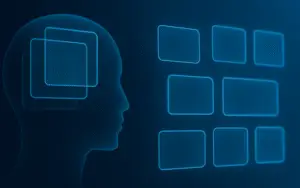
Online education or distance online education has undergone a transformative journey in the United States, reshaping the learning landscape and providing unprecedented opportunities for students of all ages. Over the past few decades, technological advancements and the proliferation of the internet have paved the way for a robust online instruction education system. This article delves into the evolution of online education in the United States, exploring its historical roots, key milestones, current status, and prospects.

Historical Roots of Online Education (Early Experiments (1960s-1980s)
The roots of online education in USA can be traced back to the 1960s when institutions started experimenting with computer-based learning. Developed at the University of Illinois, the PLATO system is considered one of the earliest examples of computer-an assisted instruction.
Emergence of the Internet (1990s)
The widespread adoption of the internet in the 1990s marked a significant turning point for online education. The University of Phoenix, established in 1976, became a pioneer in offering online courses catering to working adults.
II. Key Milestones in the Development of Online Education in United States
Accreditation and Credibility (1990s-2000s)
The accreditation of online programs became a crucial factor for their acceptance and recognition. The Southern Association of Colleges and Schools was one of the first accrediting bodies to provide accreditation for online institutions.
Technological Advancements in USA (2000s-2010s)
The evolution of Learning Management Systems (LMS) such as Blackboard and Moodle facilitated the organization and delivery of online courses.
Web 2.0 technologies, including forums, blogs, and multimedia content, enhanced the interactive aspects of online learning.
Massive Open Online Courses in USA (MOOCs) (2012-2015)
Platforms like Coursera, edX, and Udacity popularized MOOCs, offering free and accessible courses from renowned institutions. MOOCs gained immense popularity, attracting millions of learners worldwide and challenging traditional education models.
Current State of Online Education in the United States
Explosive Growth and Enrollment in online learning
The demand for online education has surged, with millions of students opting for online courses and degree programs. Traditional universities have also embraced online learning, expanding their offerings to cater to a diverse student population.
Diversity of Programs and Institutions offering distance learning
Online education is now more comprehensive than just a few disciplines; many programs, from humanities to STEM fields, are available online. Esteemed universities, community colleges, and vocational institutions offer online courses, providing flexibility and accessibility.
Technological Integration and Innovation in Internet based Learning
Virtual Reality (VR) and Augmented Reality (AR) are integrated into online education, creating immersive learning experiences. Artificial Intelligence (AI) is used for personalized learning, adaptive assessments, and intelligent tutoring systems.
Challenges and Opportunities in distance learning
Challenges such as the digital divide, concerns about the quality of online education, and issues related to assessment and accreditation persist. Opportunities lie in the potential for democratizing education, providing access to underserved populations, and fostering lifelong learning.
Future Prospects of Online Education
Hybrid Learning Models
The future may witness a blend of traditional and online education, creating hybrid learning models that combine the best of both worlds.
Flexibility and customization will be key considerations in designing these hybrid approaches.
Skill-focused and Industry-aligned Programs
Online education will likely see an increased focus on skill development and industry-aligned programs to meet the evolving demands of the workforce.
Short-term certifications and micro-credentials may become more prevalent.

Global Collaboration and Accessibility
Online education has the potential to foster global collaboration, breaking down geographical barriers and promoting a diverse learning environment.
Efforts to bridge the digital divide and ensure accessibility for all will play a pivotal role in the future of online education.
Continued Technological Advancements
Advances in technology, including AI, VR, and AR, will continue to shape the landscape of online education, offering innovative and engaging learning experiences.
Summary
Online education in the United States has evolved from early experiments to a dynamic and integral component of the education system. Key milestones, technological advancements, and overcoming challenges have marked the journey. As we look towards the future, online education promises further transformation, offering diverse, accessible, and innovative learning experiences for students nationwide and beyond. The ongoing dialogue between educators, policymakers, and technology experts will be essential in shaping the future trajectory of online education in the United States.









